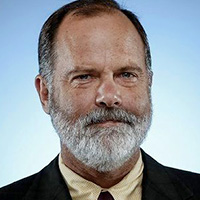HOW DOES ONE BEGIN TO COMPREHEND the crisis of homelessness in modern America, especially in Los Angeles? It is a crisis of poverty and inequality, of predation and ignorance. It is a health crisis and a human crisis, a blight, a threat and a tragedy. It is at once invisible and painfully present, the unhoused person camped out of sight, the encampment beneath the freeway overpass.
No one who lives or works in Los Angeles is unaware of this crisis, and yet it grows, year after year. Today, the number of people without homes in the city of Los Angeles is larger than the population of a midsize city. The number of unhoused people in Los Angeles County is greater than the number of all people who live in Palo Alto, where that city’s richest resident has enough money to pay the rent for every homeless person in Los Angeles County for more than 60 years.
Numbers are important in considering the implications of this crisis. They help policymakers and others understand its dimensions and narrow the range of its solutions — this many people without housing cannot simply be moved, for instance.
But important, too, are the intimate particulars of this crisis. How does a young boy or girl without a home secure an education? What does a person who lacks an address do to receive government assistance or treatment for a flu? One person may be homeless because she lost a job. Another person may become homeless because of addiction. Still another may become addicted because of homelessness. The causes and experiences of those without homes must inform the policies intended to help them.
One solution — rental assistance, say — may be all that one person needs, while the same solution might fall far short of what another requires to regain stability.
The search for meaningful progress on these questions is undermined by preconceptions and prejudices. Those who think of a homeless person as a hobo or a bum miss the reality of life on Los Angeles streets. This city’s vast population of unhoused people includes thousands of women and children, young men and people who work. The causes of their circumstances include addiction, yes, but also unemployment and the high cost of housing. Many people have jobs but cannot afford the deposit needed to secure an apartment, so they live in cars or shelters.
To her credit, Los Angeles Mayor Karen Bass has taken the brave — some might say foolish — step of placing her reputation and legacy on the line with this issue. She has vowed not just to make token humanitarian gestures but also to significantly affect the lives of those who live without reliable housing.
Hers is a call to moral clarity, a reminder that this condition is a stain on the society that tolerates or adjusts to it. But if the call is moral, the challenge is practical. What, if anything, will actually alleviate this crisis?
Easing it must start with clear thinking, with the eradication of false or antiquated ideas. And it must depend on flexibility, the sharp recognition that a single solution will not make this problem go away.
What will? That’s the question. With this issue, Blueprint looks at those who are asking it and fashioning answers that may eventually produce significant, lasting results; that may reduce suffering, protect public safety, save lives and deliver peace to troubled souls.























